
bastoncini di pane
What is the common thread connecting all of my favorite memories eating out at Italian-American restaurants as a child? Was it singing along to Frank Sinatra, winding the perfect forkful of spaghetti, or the abundant sense of garlic that permeated the air? No. It was the bread! And I’ve decided to go back and walk down memory lane by baking this pile of ciabatta breadsticks.
I always fall victim to every mother’s warning, “don’t fill up on bread”. I do, and I don’t regret it. I wait anxiously for that basket of gold to arrive on our table. When the moment comes, I seem to tune out all the chaos happening around me, and a silence falls on the room – it’s just me and the bread. Crispy on the outside, warm and pillowy on the inside. A gentle dip in some extra virgin olive oil is all it needs. Before this gets too sensual, I’ll move on to the technicalities of bread making.
I’ll come right out and say it- bread making is hard. It seems easy, 4 ingredients: flour, yeast, water, salt. “How can I possibly mess that up?” Well I have learned many times, yes I can mess that up. So I’m hoping this ciabatta breadsticks recipe saves you from some of the frustration bread making can bring.
There is no sourdough starter, no levain, or poolish, or biga, no banneton, no laminating, no overnight rise, and no mixer! There’s also no kneading, very little working of the dough at all. A very easy and quick, throw it together, last minute bread recipe (as last minute as you can get while still allowing for a 2 hour rise).
Ingredients
- Flour – type 0
- Yeast
- Sugar
- Salt
- Water
- Olives or sundried tomatoes
- Fresh rosemary
I’m using the type 0 flour for this ciabatta breadsticks recipe. In the category of soft wheat flour, Italy has a variety of flours graded 00, 0, 1, and 2. The number indicates the amount the grain has been processed – the lower the number, the greater the amount of processing the grain has been subjected to.
- Type 00 (doppio zero) is the most refined. It contains almost no bran at all and is quite rich in starch. It’s often mistaken as being low-protein because of it’s fine grind but it’s actually considered “medium-strong” and best used to make pizza, fresh pasta, or soft doughs, but is not suitable for long leavening. It is also ideal for cakes, biscuits, and shortcrust pastry.
- Type 0 is less refined than 00. It still contains starches but has a high gluten content so it is more ideal for bread making.
- Type 1 and 2 are less commonly used. Type 1 is unrefined and processed without eliminating the wheat germ and bran. Despite being richer in nutrients and protein content, it is classified as a weak flour, being less suitable for baking due to the low amount of gluten.
- Type 2 is processed without completely eliminating bran and fiber. This flour is very similar to wholemeal and is called semi integrale. It’s rich in nutrients, which allows it to be easily kneaded, even if it does not offer the results of elasticity typical of refined flours.
For this ciabatta breadsticks recipe, bread flour can be substituted for the Type 0 flour.

Step by Step
This ciabatta breadsticks recipe starts by adding the flour, yeast, and sugar to a large bowl. Using a pinch of sugar is very important in bread making as it helps to activate the yeast. Instant dry yeast doesn’t need to be activated in water first and can be added straight into the dry ingredients. However, salt can impede the activation of yeast so it’s important to keep the two separate in the bowl or add later in the dough mixing process.
Add the lukewarm water to the dry ingredients and simply mix everything together with a fork. Add the salt, rosemary, and olives or sun-dried tomatoes. Stir until incorporated everything’s incorporated. The dough will be too sticky to knead with your hands. And that’s the way we want it! Don’t be tempted to add more flour.
Cover the bowl with a towel or plastic wrap and allow to rest at room temperature.
After 30 minutes, go in and make a few folds in the dough. Since it is so sticky, wet your fingers first, and then just make a digging motion, scooping the dough from the outside and folding it in towards the center. Turn the bowl 90 degrees and repeat all the way around. Repeat this step after the next 30 minutes.
Cover and let rise another 1 hour at room temperature.
The dough won’t balloon up and double in size like some bread doughs because of the high hydration, but it will rise slightly, get bubbly, and a gluten network will develop.
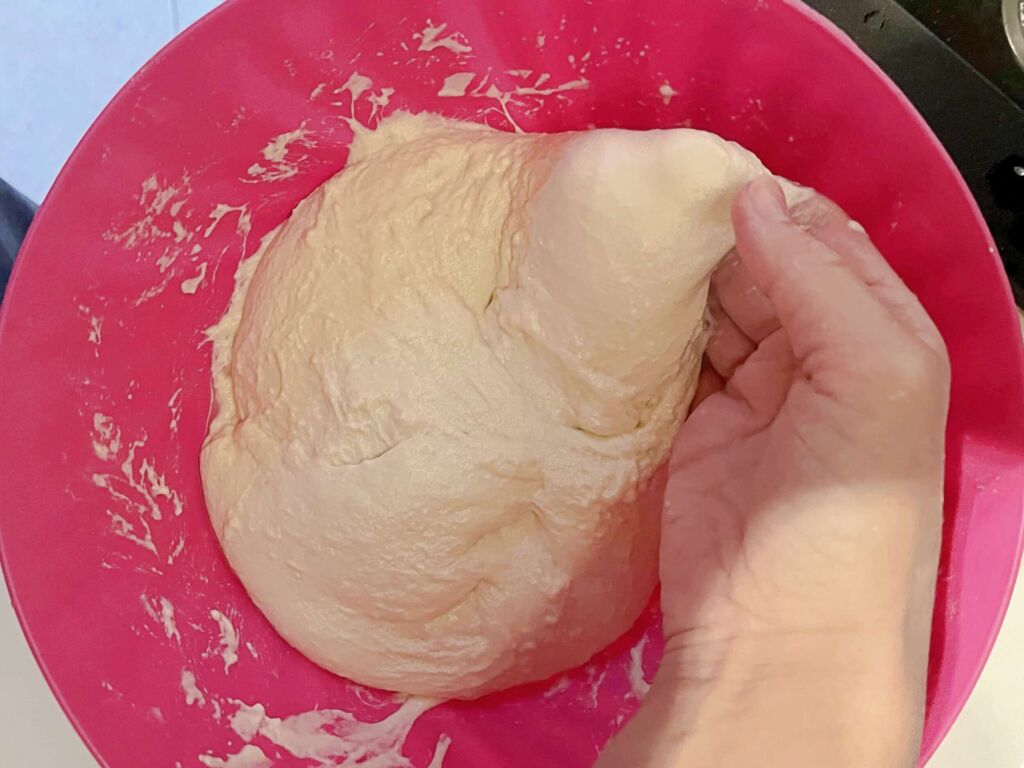

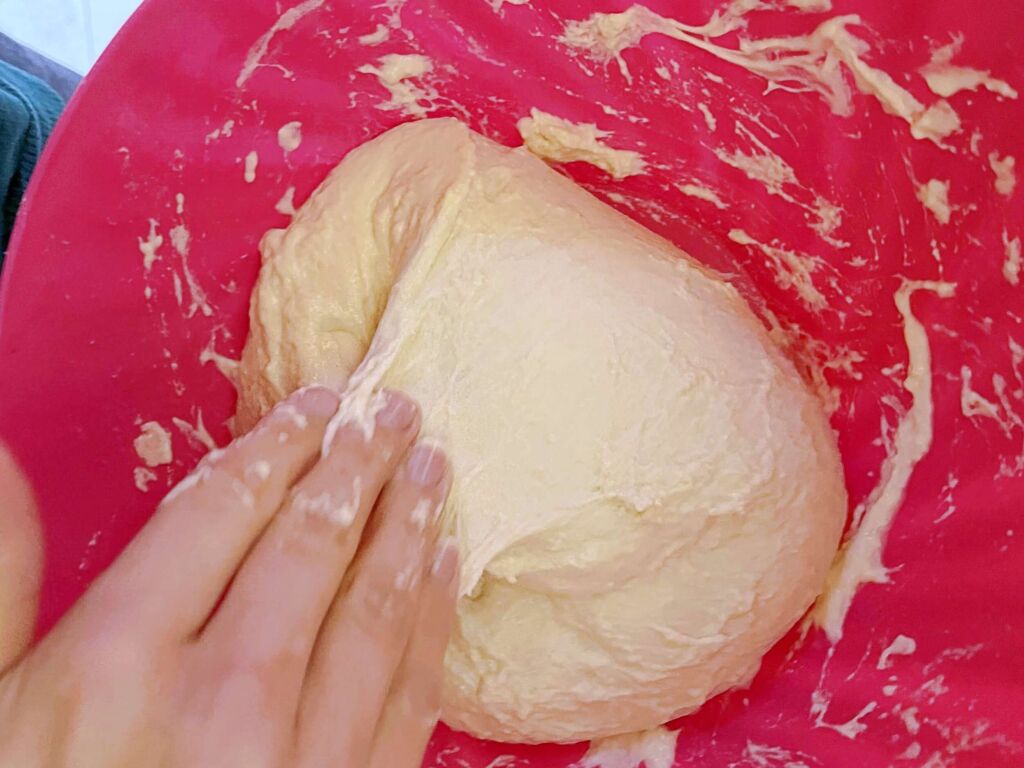
Liberally dust a work surface with flour and scrape the ciabatta dough out of the bowl. With your fingertips, press the dough into a rough rectangle and fold like a letter, careful not to squeeze out the air bubbles that the yeast created in the dough.
Press the dough log back into a rough rectangle, using more flour if the dough is sticky. Using a knife or bench scraper, cut the dough into 6 long sticks, stretching them into longer and thinner sticks if desired.
It’s ok if they are a strange, “rustic” shape. Mine usually look like alien blobs before they are baked but end up looking like appetizing breadsticks when they come out of the oven. Magic!


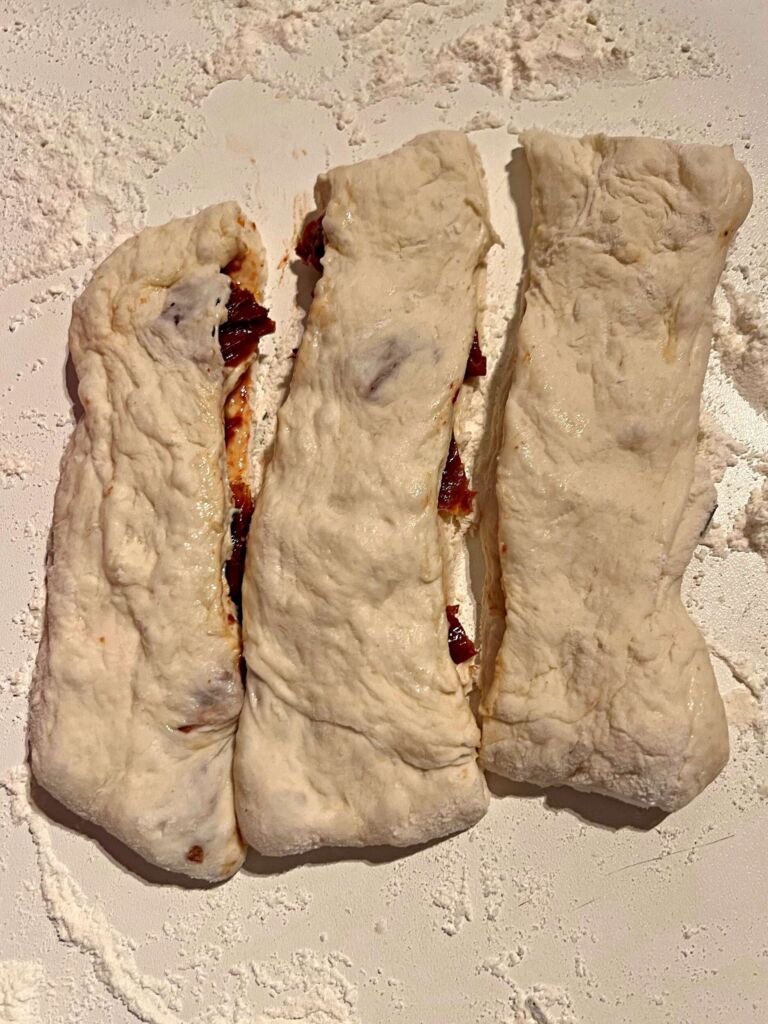
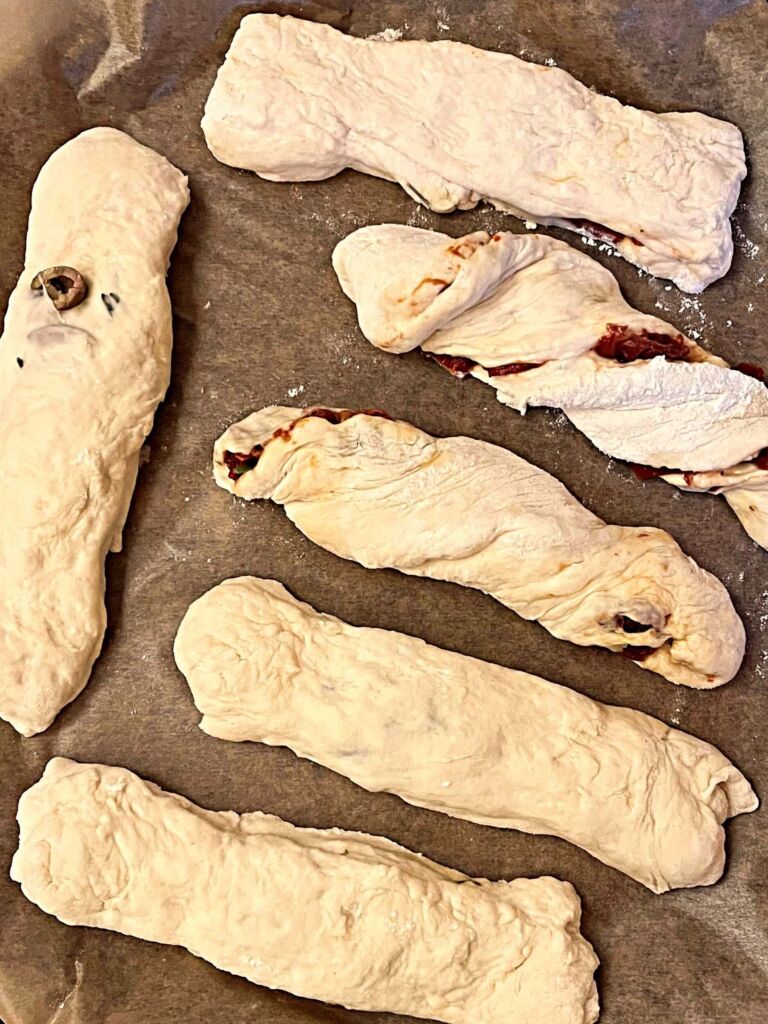
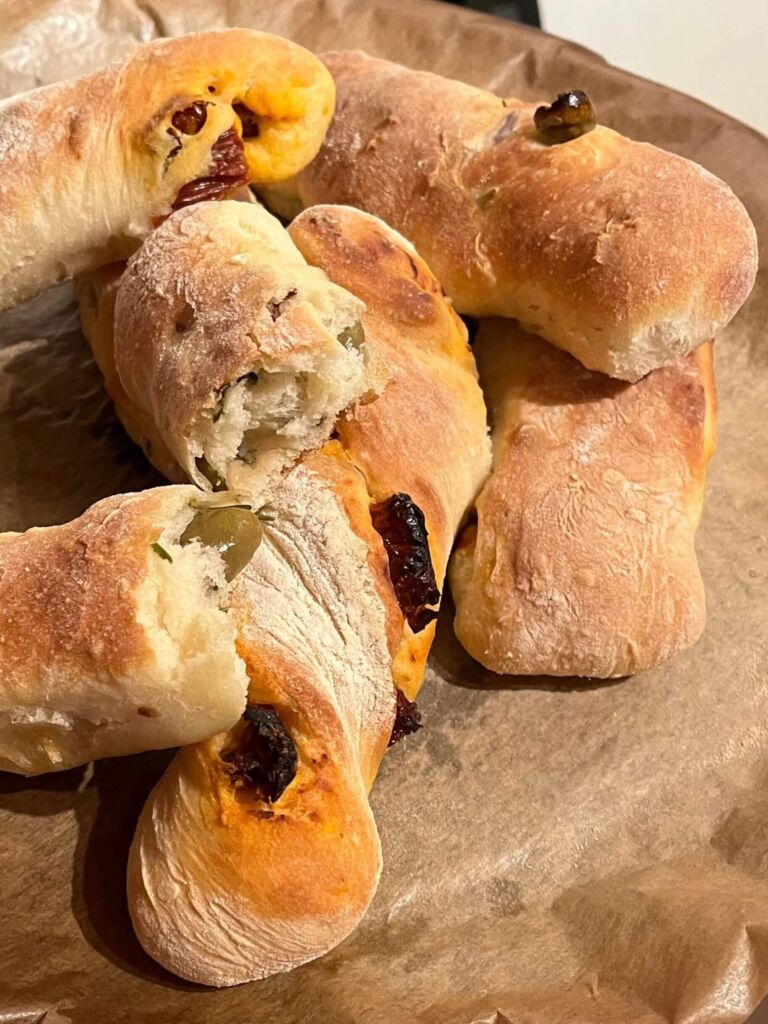
Lay the breadsticks on prepared baking trays lined with parchment paper. Cover with a towel or plastic wrap and let rest for 15-20 minutes. Meanwhile, preheat oven to 200 °C.
Bake for about 20 minutes or until they are golden brown.

Tips & FAQs
- Bread flour can be substituted in an equal amount for the Type 0 flour
- Try substituting whole wheat flour for half the amount of white flour

Ciabatta Breadsticks Recipe
Ciabatta Breadsticks
6
breadsticks15
minutes20
minutes120
minutesIngredients
300g Type 0 flour – *see note
5g dry brewer’s yeast – *see note
1 tsp sugar
1 tsp salt
220g warm water
80-100g olives or chopped sundried tomatoes
1 sprig fresh rosemary, leaves roughly chopped
Directions
- Add flour, yeast, and sugar to a large bowl. Stir to incorporate.
- Add the warm water to the dry ingredients and mix with a fork. As the dough starts to come together, sprinkle in the salt, olives, and leaves of rosemary. Continue to mix until incorporated. The dough will be sticky and shaggy, not smooth. Do not add more flour.
- Cover with a towel or plastic wrap and let rest for 2 hours. After the first 30 minutes, make folds in the dough. Wet your hands so that they don’t stick and make a digging motion, scooping the dough from the outside and folding it in towards the middle. Rotate the bowl 90 degrees, and repeat once all the way around. Repeat again after the next 30 minutes.
- Preheat oven to 200 °C and line a large baking sheet with parchment paper.
- Turn dough out onto a well-floured counter and gently press into a rough rectangle, being careful not to deflate the dough too much. Cut into 6 long strips and place on a prepared baking sheet. Cover with a towel or plastic wrap and let rest for 15-20 minutes.
- Bake in a preheated oven for 18-20 minutes or until golden brown.
Notes
- * Bread flour can be substituted in an equal amount for the Type 0 flour.
- * In Italy, I use Paneangeli Mastro Fornaio Lievito di Birra. Feel free to use whatever brand of instant yeast you prefer.
More recipes
Sheet-Pan Sausage Meatballs with Romanesco and Sweet Potato
Roasted Fennel with Parmigiano Reggiano Breadcrumbs
Ricotta Crostata with Chocolate
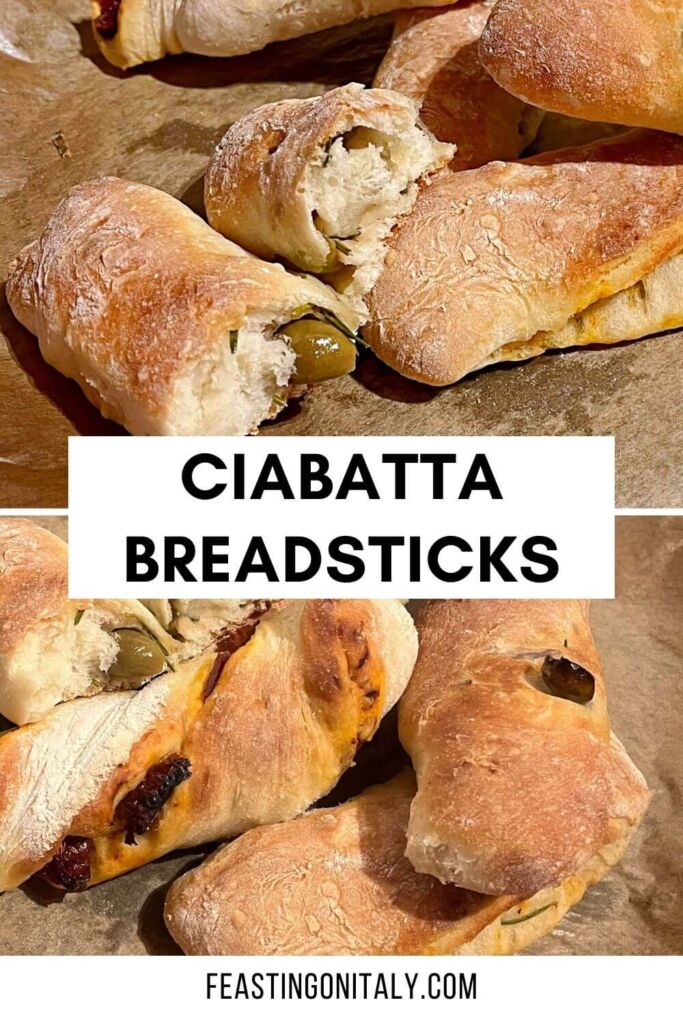
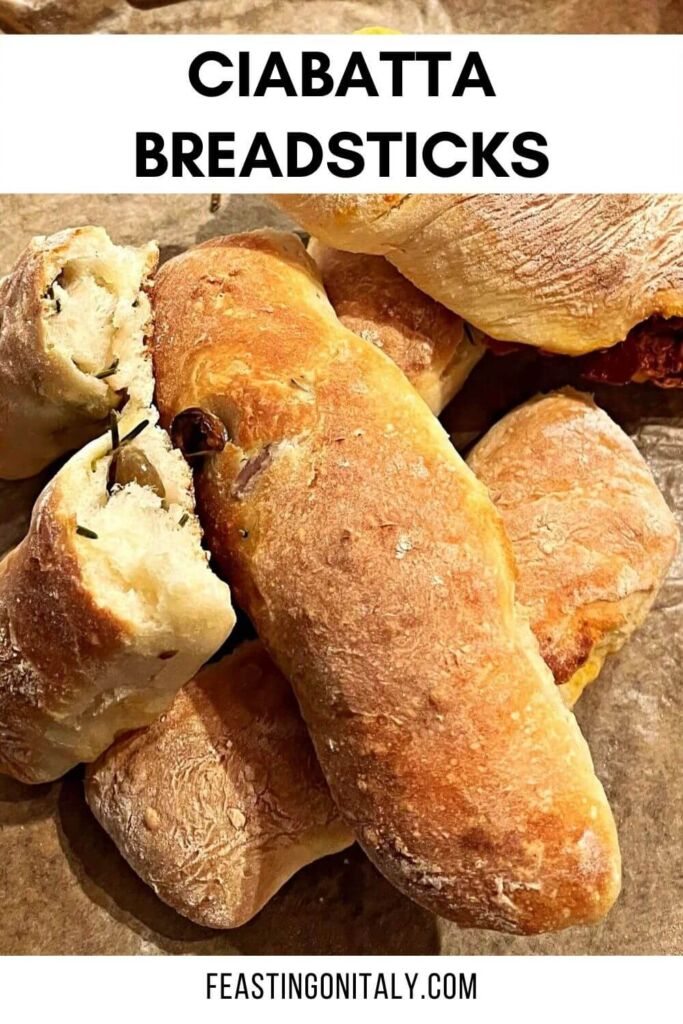

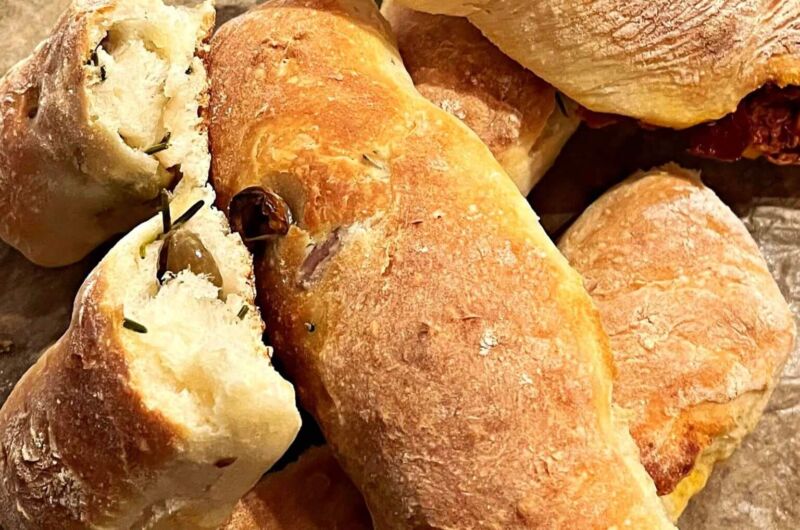

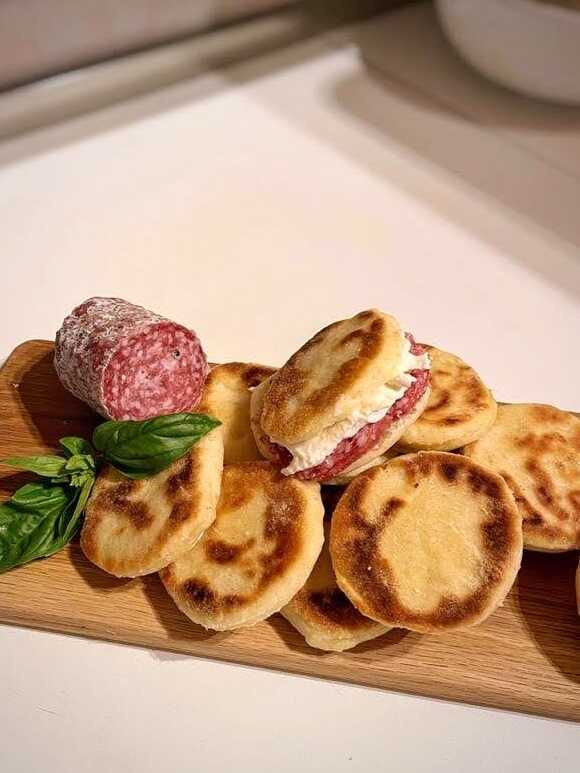
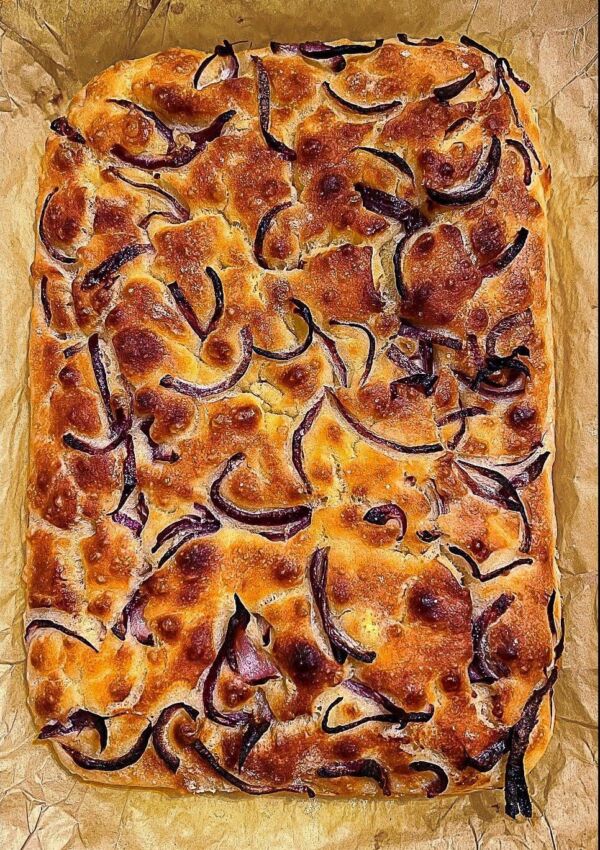
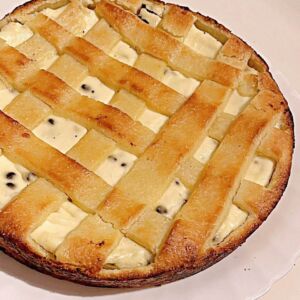

Leave a Reply
You must be logged in to post a comment.